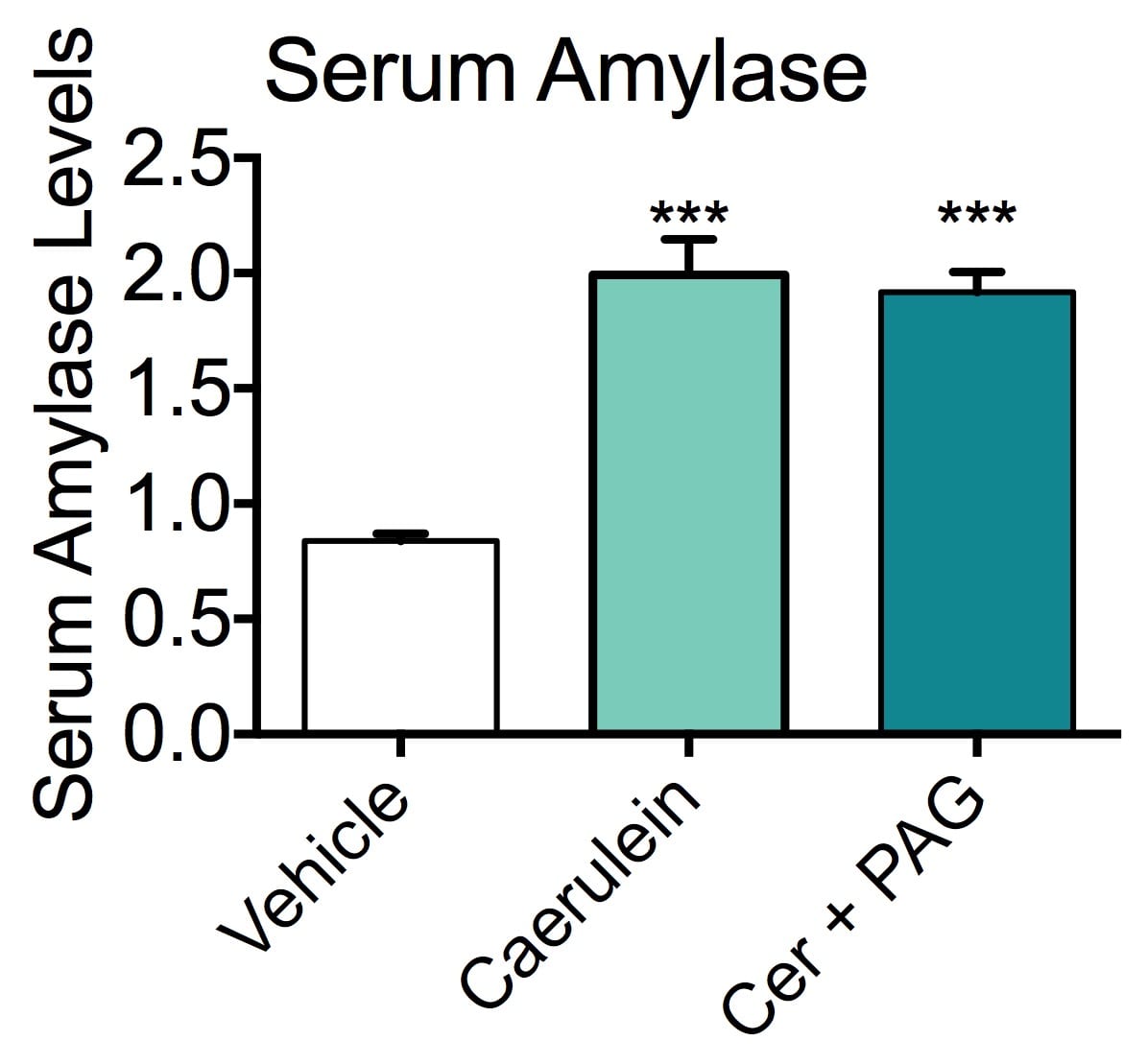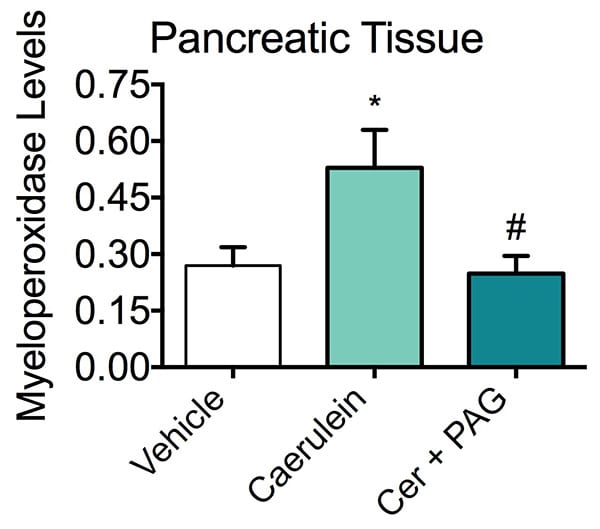Acute Pancreatitis Model
Ready to get started or looking for a custom model?
Contact us today for more information about our bespoke research models and to discuss how we can help you answer your unique research questions.

Serum Amylase. Amylase levels in serum from Caerulein-challenged mice. CD-1 mice were treated with vehicle, Caerulein or Caerulein+PAG. One hour after the final injection, blood samples were collected and serum was isolated and analyzed for amylase levels by enzymatic assay. Amylase was significantly increased after Caerulein treatment compared to vehicle (nontreated). PAG pre-treatment did not significantly alter the increase in serum amylase compared to Caerulein alone. Data are mean ± SEM; ***p<0.05 compared to vehicle (untreated control) (N=6).
Multiple injections of Caerulein in mice caused significant acute pancreatitis, as measured by increases in serum amylase and pancreatic MPO. The Caerulein dosing was well-tolerated, with no observable adverse effects. Pre-treatment with PAG significantly reduced levels of MPO, but did not alter amylase levels in the challenge model.
These results demonstrated that Caerulein injections are sufficient to induce a measurable acute pancreatitis model that can be moderately altered by PAG pre-treatment. This model has potential utility in screening therapeutic compounds for treatment of pancreatitis.
Myeloperoxidase levels in pancreatic tissue. CD-1 mice were treated with vehicle, Caerulein or Caerulein + PAG. One hour after final Caerulein injection, pancreas samples were collected, homogenized and analyzed for MPO levels via ELISA. Caerulein significantly increased MPO levels in the pancreas, while Cer+PAG treated mice had significantly attenuated MPO levels compared to vehicle (untreated) mice. Data are mean ± SEM; *p<0.05 compared to vehicle (untreated control); #p<0.05 compared to Caerulein (N=6).
Frequently Asked Questions
The endpoints that are most often performed is MPO and serum amylase levels analysis.
We have recently validated a chronic pancreatitis model where caerulein was administered three days a week for 28 days. We saw significant changes in the histology of the pancreas. Our scientists would be more than happy to provide the validation data for this chronic pancreatitis model.
Yes. We also have an acute pancreatitis induced by the administration of IL-12 and IL-18 in ob/ob mice. Our scientist would be more than happy to provide the validation data for this acute pancreatitis model.
Synonyms: Pancreatic Inflammation, MPO, Amylase

